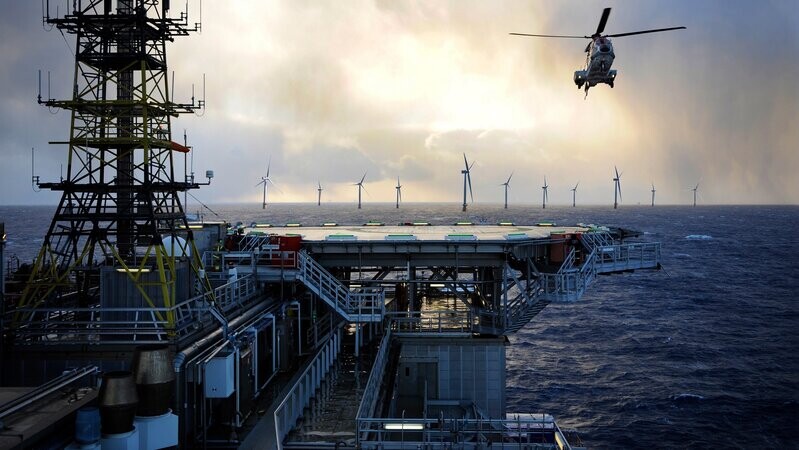Gulf of Maine fishermen are feeling stressed as the plan for hundreds of offshore wind turbines continues to move forward. Eight leases will be held in the large area that has been fished for many generations off the New England coast. The Bureau of Ocean Energy Management (BOEM) recently released the eight proposed areas that will be auctioned this fall.
If the area gets totally developed, it would be nearly 1 million acres. The project addresses large-scale environmental concerns regarding the power and uncertainty of fish species in the area. According to Global Seafood, while the process of developing widely supported offshore wind farms in the Gulf of Maine has been years in the making- and another decade could pass before any floating wind turbines become operational- simply entering the lease auction phase has some commercial fishermen fearing the worst.
Jerry Leeman, a former commercial fisherman and the CEO of the New England Fishermen Stewardship Association (NEFSA), told Global Seafood, “There’s not enough data to support the areas that have been chosen for wind development. As now laid out, the plan could take away valuable fishing grounds from New England’s fishing fleet, post navigational hazards, and create new environmental threats.”
“We still have more questions than we have answers, yet we’re moving ahead with the leasing ahead of the science.”
Global Seafood shared that the Gulf of Maine’s offshore wind resource has been described as the Saudi Arabia of wind, comparing its power potential to the vast Saudi oil reserves. The areas to be leased include two zones east of Maine and New Hampshire and six zones east of Massachusetts. The water in these areas is roughly 400 to 700 feet deep.
BOEM claimed that they have found no significant environmental impact from lease issuance. When you put together all eight leases, the Gulf of Maine offshore wind development is poised to be the largest ever. Currently, Hywind Tampen is the largest floating offshore wind farm located in the North Sea, 87 miles off the coast of Norway, and it began producing power in November 2022.
Being the world’s largest floating offshore wind development, Hywind Tampen has raised similar concerns among the fishing community in Norway. An article from The Fishing Daily in September 2023 shared that the Norwegian Institute of Research claimed, “The knowledge we have today cannot answer the questions that fishermen have about how offshore wind development may affect fisheries.”
A researcher from the institute, Anne Christine Utne Palm, shared, “We lack knowledge about the effects of, for example, noise, electromagnetic radiation from the cables, and the changes in wind or current patterns.”
Utne Palm and other marine researchers from the institute worked on a new report that aimed to describe the consequences of Hywind Tampen based on current information and identify what knowledge is lacking to answer fishermen's questions. The facts commonly shared among U.S. fisheries and offshore wind are similar to what has been stated overseas.
“There are very few studies in the world that examine the impact of offshore wind on fisheries, and of those we have found, none include catch data,” shared Utne Palm. The Fishing Daily stated that from the research conducted so far, offshore wind installations can affect the local ecosystem.
“But we do not know how extensive the affected area will be and whether the effects observed locally can lead to impacts on entire stocks and larger areas. The size of the development will, of course, play a role in this.”
Fishermen and associations in Norway have been highly critical of Hywind Tampen. Those who participated in surveys were concerned about further research and thought that the research should have as long a time for perspective as possible.
“They (fishermen) believed that if we only use catch data from the last four or five years, we will miss a lot of information because fisheries change from year to year and over longer periods. One example was the Norwegian spring-spawning herring, which changed its migration pattern for a while, only to return to its ‘usual’ route later,” shared Utne Palm.
Similarly, Leeman told Global Seafood in the Gulf of Maine, “The biggest question we have is insufficient data. There’s not a fisherman alive that’s against going green, but this is a perfect example of leaping before we look.”
NEFSA and other fishing organizations have raised concerns over sediment plumes during installation, whales’ migratory routes, marine species, and the effects on zooplankton and phytoplankton. The Norwegian researchers concluded that “more knowledge is needed.” In the Gulf of Maine, there’s still plenty of work ahead before anything is ready to be operational.







